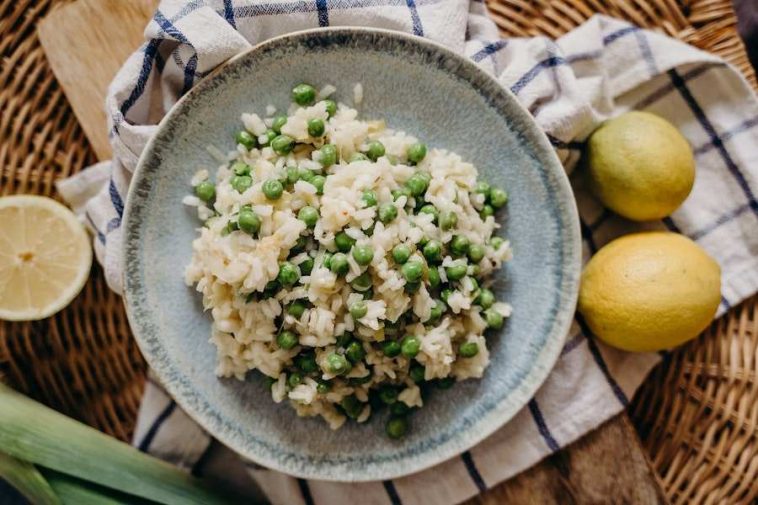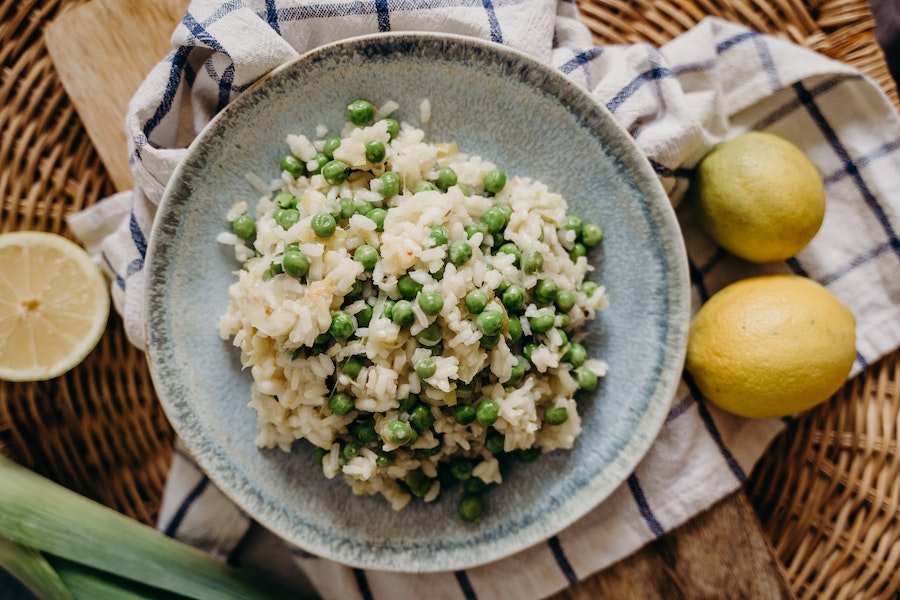Risotto is a delicious, creamy, and gooey Italian dish that usually consists of Arborio rice, onion, garlic, broth, and other seasonings. It’s probably not the first thing that comes to mind when you think about healthy foods. And for good reason – most commercial versions of risotto are high in fat because of the amount of butter and cheese that’s typically used in preparation. Arborio rice is what gives risotto its creamy texture. When it’s cooked with liquid (such as broth or wine), it produces starch as a byproduct. This is what gives risotto its signature texture and appearance. To make an unhealthier version of this dish even unhealthier, many chefs use heavy amounts of butter or oil along with parmesan cheese as part of their prep process. Fortunately, making a healthier version at home is fairly simple to do once you know how to do it right. Here are some tips on how to make risotto a healthy meal again:
Is Risotto Healthy?
There’s no definitive answer, as it depends on the ingredients you use. But generally speaking, risotto can be a healthy dish if made with whole grain Arborio rice, low-fat or vegan cheese, and plenty of vegetables. You could also add lean protein like shrimp or chicken for an extra boost of nutrients. Just be mindful of how much oil you use to cook the rice, and avoid adding too much salt. With a little bit of creativity, risotto can be a delicious and healthy meal option!

Use Broth And Play Around With Flavors
1. Use Broth Instead Of Water
When it comes to risotto, the main ingredient is arborio rice. You can use broth instead of water to help create a more creamy consistency. For example, if you add broth to your risotto, you’ll get a thicker and creamier risotto that’s closer to the real thing. We recommend using chicken or vegetable stock because they are lower in sodium. Beef or vegetable bouillon is also an option – but you’ll need to use less of it than if you were using water.
2. Experiment With Flavor Combinations
With this method, the final product will be more flavorful and fragrant than if you were just using plain chicken broth instead of adding flavorings like wine, thyme, and garlic powder. Because your risotto will be cooked in liquid before it becomes firm, and then finished off with cheese and butter, there’s no reason not to experiment with different flavors! Some ideas include.
3. Use Less Butter And Cheese On Top Of The Risotto
If you’re going to add butter and parmesan cheese to your risotto, it’s best if you don’t use too much at first. This will help prevent it from sticking together while cooking, as well as make it easier for you to stir it all together before serving. Try using just a tablespoon or two at first if you want a creamy consistency without having too much leftover in the end. If you want more flavor, add more butter and cheese.
4. Use A Whisk Instead Of A Fork
If you’re making your own risotto, it’s best to use a whisk instead of a fork or spoon to stir the rice and liquid together before serving. This allows you to get every last bit of rice in the pan without having any leftover byproducts that could go bad before serving. It also prevents food from sticking to the whisk, which will help your dish come out more evenly cooked. If you do end up using a fork or spoon, just be sure not to scrape against the bottom of the pan too much; this could cause your risotto to burn.
5. Add Wine Or Broth At The End So It Doesn’t Overcook
When you’re making risotto, it’s important not to overcook it. Overcooking rice can cause your dish to become mushy and will make the rice less creamy. If you’re adding wine or broth to your risotto, add it at the end so that it doesn’t overcook into a sauce. You may also want to add the liquid at the end because it will help prevent some of your risotto from getting too dry if you add too much liquid during cooking.
Mix Up Your Grains With Quinoa
- Place 1 cup of quinoa into a saucepan with 2 cups of water. Bring to a boil and then reduce the heat to low. Let simmer for 15 minutes, or until tender.
- Once it’s done, remove the pot from the heat and let it rest for 5 minutes. Drain any excess water off of the quinoa and fluff with a fork before serving.
- To make risotto, use ½ cup of cooked quinoa (1 cup cooked), ½ cup Arborio rice, ½ cup onion, 1 clove of garlic, 1/2 teaspoon thyme, 1/2 teaspoon rosemary, ¼ cup broth (chicken or vegetable), salt and pepper to taste. Mix all ingredients together in a pot on medium heat until the broth is absorbed by all ingredients (about 8-10 minutes). Remove from heat and serve immediately!
- Another option is to use quinoa instead of Arborio rice. This makes risotto a bit more filling and you won’t have to worry about using as much broth.
- The amount of liquid that’s used in a standard recipe of risotto can make or break the dish if you don’t have enough or too much liquid in the pot. When cooking risotto, it’s important to use a pot with an even surface area (otherwise, uneven cooking will occur). A 3-quart pot is perfect for most recipes, but if you plan on making more than one batch at once, then you may want to get a 6-quart pot instead. If you do happen to need more than one batch at once, then simply do two batches at once and let them simmer side by side in the same pot (the heat will distribute evenly between both batches).
Add Vegetables To The Dish
- Include vegetables in the risotto. Risotto isn’t just made with rice. You can add mushrooms, asparagus, peas, or even spinach to make it more nutritious. For a complete meal that’s not only healthy but also filling and delicious, try adding some sautéed chicken breast to the dish.
- Choose a vegetable that’s high in fiber such as spinach or kale for added nutrients and vitamins.
- Use low-fat broth such as low-sodium chicken broth or vegetable broth (for a vegetarian dish).
- Use small amounts of cheese such as parmesan cheese or reduced-fat cheddar cheese when making the risotto recipe (for a vegetarian dish).
- Use low-fat butter (or no butter at all) for the cooking process.
- Add a little bit of oil to the dish if using butter, but only enough to coat the bottom of your pan. This will prevent the risotto from sticking to your pan during cooking.
Don’t Be Afraid Of Lean Protein
- The first step in making risotto healthier is to add some lean protein to the dish. If you’re going to use chicken or seafood, try to choose cuts that are lower in calories and higher in protein (such as skinless chicken breast, shrimp, or scallops). You can also add some fish (such as salmon) into your risotto for a nice fish meal.
- For vegetarians, tofu is a great option for adding some protein and flavor to your risotto. You can also mix in cooked beans such as black, pinto, or navy beans or even edamame beans (if you’re feeling adventurous).
- If you want more of a kick in the flavor department, consider adding some chopped red pepper flakes to your dish. This will give it a little bit of heat without adding extra calories.
- Finally, if you don’t have any proteins on hand that fit the above criteria, consider using
Conclusion
Risotto is a delicious meal that can be enjoyed regardless of your diet. However, it’s not always the healthiest choice. To make it healthier, choose quinoa over rice, add vegetables, and don’t be afraid of lean protein. Finally, if you like, you can bulk up your risotto with lots of healthy sides.





